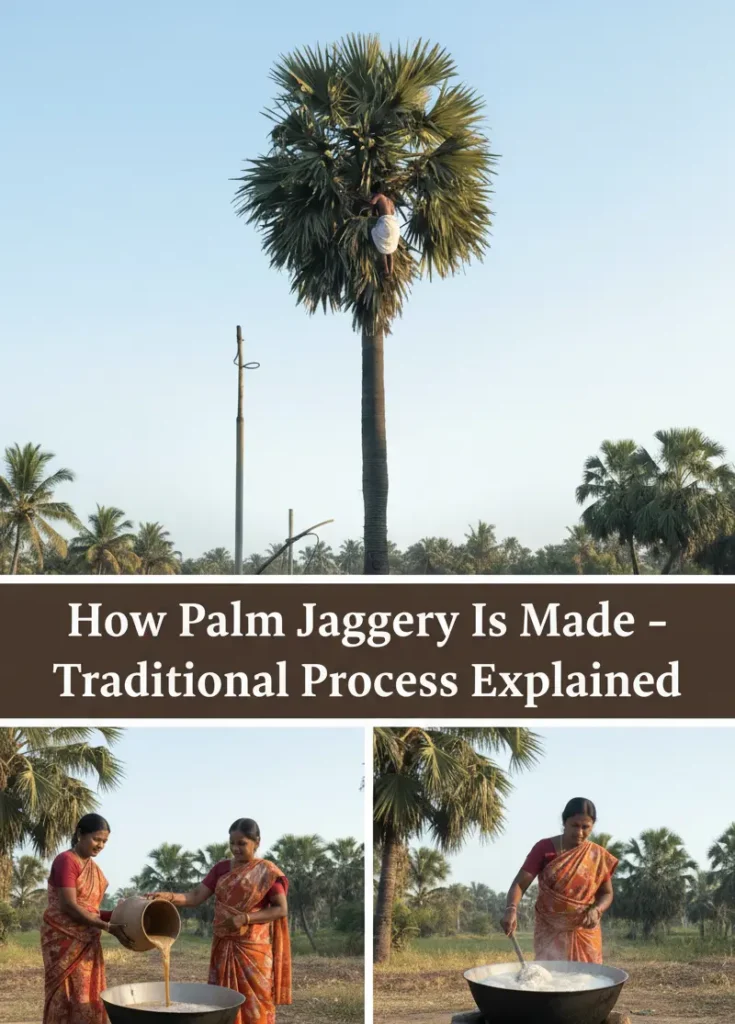Palm jaggery, also known as Karupatti in Tamil, is one of India’s most ancient and natural sweeteners. Unlike refined sugar, it’s made using a traditional, chemical-free process that retains all its nutrients and natural goodness.
If you’ve ever wondered how palm jaggery gets its unique taste, aroma, and dark brown color — here’s a step-by-step look at how palm jaggery is made traditionally.

The process begins with the Palmyra palm tree (Borassus flabellifer). Skilled tappers climb the tree early in the morning and make a gentle cut on the flower stalk (spadix) to extract the sap, known as neera.
This sweet, milky liquid is collected in earthen or clay pots, often coated with lime to prevent fermentation.
The freshly collected neera is poured into large iron or earthen pots and boiled over a wood-fired stove or open flame.
This is a slow process that takes 3 to 5 hours, during which the liquid gradually thickens and darkens in color.
The key is to keep stirring continuously to prevent burning and ensure even consistency.
As the sap boils, it turns into a thick, golden-brown syrup with a strong caramel aroma.
This stage is crucial — it determines the texture and taste of the final product.
The artisans rely on experience, not machines, to judge the exact consistency — when the syrup starts forming threads, it’s ready.
Once the desired thickness is reached, the hot syrup is poured into coconut shells, wooden molds, or flat trays and allowed to cool naturally.
As it cools, it solidifies into dark brown jaggery blocks — the purest form of palm jaggery (Karupatti).
Unlike refined sugar, palm jaggery is completely natural.
There’s no bleaching, sulfur treatment, or filtration — which means all the iron, calcium, potassium, and magnesium remain intact, making it a true superfood sweetener.
It takes nearly 10 liters of palm sap to produce 1 kilogram of palm jaggery — a labor-intensive process that preserves traditional skills passed down for generations.
Get 100% pure, traditionally prepared Udangudi Karupatti (Palm Jaggery) — chemical-free and farm-direct.
👉 Order now at UdangudiOriginals.com
Taste the tradition. Feel the health.